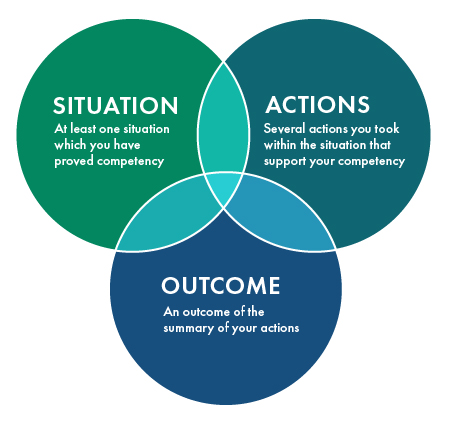Competency-Based Assessment Tool
The Competency-Based Assessment Tool (CBAT) is an electronic form designed to capture the applicant’s understanding and achievement of the 22 key competencies required for registration as a Professional Engineer or Licensee.
Watch the full Competency-Based Assessment playlist on YouTube
The Competency-Based Assessment Tool (CBAT) can only be completed after the applicant has submitted their Work Record Validator List (WRVL).

-
A series of steps for submitting the Competency-Based Assessment Tool within the APEGA membership application.
- Simplified drawing of a computer monitor with five completed checkboxes and the text: Start the online application. Complete the first five steps
- Step 6: Complete and submit the WRVL (Work Record Validator List)
- Step 6, highlighted to indicate this is the current step: Complete and submit your CBAT (Competency-Based Assessment Tool)
- Next: Finish application submission and pay
- Second submit on WRVL and CBAT
- MRefQ (Modified Reference Questionnaires) and VRFs (Validator Response Forms) received
- Application in queue to be processed, VORFs (Validator Overall Reference Forms) to be requested
What are Competencies?
Competencies are skills or knowledge that APEGA has identified as crucial to the professional practice of engineering. They are based on the applicant’s decisions, behaviors, or applications of skill or knowledge.
To demonstrate their levels of skill in each key competency, applicants must draw examples from their previous engineering experience to include in their CBAT form. When completing each page of the form, applicants will provide:
- Situation: At least one situation which you have proved competency in
- Actions: Several actions you took within the situation that support your competency
- Outcome: An outcome of the summary of your actions. This should include a basic summary of the solution, product, process, or other outcome of the situation and the actions.

The CBAT form includes skills and behaviours called indicators. Indicators are:
- Generalized examples that can be used as a guide to illustrate how the applicant may have achieved a given competency
- They do not have to be fully met to be deemed as competent
- The indicators provided by APEGA serve as a framework for the applicant to determine which aspects of their work experience apply for each key competency
- They can also highlight deficiencies the applicant may have
The applicant will include specific details of their personal work experience for every competency. Do not copy and paste the generic indicators provided.
Read more about CBAT Indicators
APEGA’s Board of Examiners will assess the applicant’s competency on the information they and their validators provide – and nothing else. Be sure to focus on:
- Technical and theoretical skills and knowledge and how they contributed to the situation and action that positively or negatively affected the outcome
- Providing details about the decisions that were made as the applicant
- Writing in first person (“I” statements instead of “we”) to show ownership of the actions.
Competency-Based Assessment Tool Evaluation Criteria
Scoring
Each competency will be evaluated against a score from 0 – 5
- 0 demonstrates no awareness for the competency
- 5 shows a mature level of practice with the competency
Details of Example
The details of the examples should put a strong emphasis on Application of Theory and Practical Experience.
Application of Theory in the respective discipline must include:
- selecting solutions and solving problems
- preparing and checking designs or interpretations
- providing evidence of sound technical judgement and practices
- demonstrating familiarity with the use and application of pertinent technologies, procedures, systems, and programs
Although the experience can include the “collection and analysis of information and data”, this should not be a major component of the experience.
Practical Experience must include:
- being exposed to work-site operations
- recognizing limitations in designs, interpretations or recommendations, and understanding the application of pertinent codes and regulations
- understanding the interdependence of disciplines, systems, and activities, and developing working relationships
The BOE will consider increased technical competency and increasing levels of responsibility when evaluating the experience.
Type of Validator Used
A validator is an individual who assesses the applicant's competences. A validator must have direct, first-hand knowledge of the applicant's work and must have provided suitable professional supervision of the applicant throughout the work period being validated and have taken technical responsibility for the applicant's work.
It is expected that, for Canadian experience, a validator will be a Professional Member (P.Eng./P.Geo.) who was registered during the work period they are validating. For non-Canadian experience, it is expected that validators are practitioners in engineering.
The validator may have a title other than supervisor and may be a manager, mentor, client, or colleague but it is expected that the validator took technical responsibility for the work of the applicant.
Any validator who is not a Professional Member must explain how they are a practitioner in engineering. This may include providing their engineering qualification (engineering degree and professional designation). This information will be requested from the validator by the Registration Program Coordinator during processing, which may include proof of academic and engineering credentials.
Family members and relatives are not acceptable as validators.
Acceptability of the validator is at the discretion of the APEGA Board of Examiners.
Click to download the CBA Guide
After the applicant has submitted and paid for their application, they must submit the CBAT again. This allow the VRFs to be sent out.
